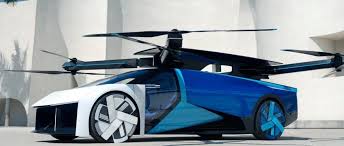
Breaking News
 James O'Keefe: My entire speech at AmericaFest 2025. We're not stopping. Join us to expose..
James O'Keefe: My entire speech at AmericaFest 2025. We're not stopping. Join us to expose..
 U.S. vs. Chinese Military Comparison – Focus on Asia-Taiwan Scenario
U.S. vs. Chinese Military Comparison – Focus on Asia-Taiwan Scenario
 DoJ Sues Four More States for Failing To Produce Voter-roll Data
DoJ Sues Four More States for Failing To Produce Voter-roll Data
 World's Largest Aviation Giant Abandons Google Over Security Concerns
World's Largest Aviation Giant Abandons Google Over Security Concerns
Top Tech News
 Perfect Aircrete, Kitchen Ingredients.
Perfect Aircrete, Kitchen Ingredients.
 Futuristic pixel-raising display lets you feel what's onscreen
Futuristic pixel-raising display lets you feel what's onscreen
 Cutting-Edge Facility Generates Pure Water and Hydrogen Fuel from Seawater for Mere Pennies
Cutting-Edge Facility Generates Pure Water and Hydrogen Fuel from Seawater for Mere Pennies
 This tiny dev board is packed with features for ambitious makers
This tiny dev board is packed with features for ambitious makers
 Scientists Discover Gel to Regrow Tooth Enamel
Scientists Discover Gel to Regrow Tooth Enamel
 Vitamin C and Dandelion Root Killing Cancer Cells -- as Former CDC Director Calls for COVID-19...
Vitamin C and Dandelion Root Killing Cancer Cells -- as Former CDC Director Calls for COVID-19...
 Galactic Brain: US firm plans space-based data centers, power grid to challenge China
Galactic Brain: US firm plans space-based data centers, power grid to challenge China
 A microbial cleanup for glyphosate just earned a patent. Here's why that matters
A microbial cleanup for glyphosate just earned a patent. Here's why that matters
 Japan Breaks Internet Speed Record with 5 Million Times Faster Data Transfer
Japan Breaks Internet Speed Record with 5 Million Times Faster Data Transfer
Flying Car vs. eVTOL: Which Is the Best New Kind of Aircraft?

The life-size electric drones known as eVTOLs have produced more hype than flight time over the last half decade. But many leaders, like Joby, Archer, and Vertical Aerospace, are now moving into more advanced testing phases with certification not far off. Some one-seat eVTOL makers, like Pivotal, have already started delivering their electric aircraft.
At the same time, with far less publicity and investment, dual-purpose, street-legal flying cars have started to take off. Creators like Klein Vision have already gained certification for the AirCar in its home country of Slovakia, while in California, Samson Sky has made structural modifications to its Switchblade flying car in preparation for commercial sales.
While both aircraft types have been called "flying cars," they have very different origins and ultimately missions. A concept that has emerged in the last decade, electric vertical takeoff and landing craft (eVTOL) offer space-age looks and technology, along with eco-friendly electric propulsion. The larger, five-seaters are largely going to be used as executive transport and air taxis.
By contrast, flying cars that can also travel by road have been an idea for more than a century, with one that went into limited production in 1937, but never really gained commercial success. These hybrid forms of transportation tantalize with the promise of both in-air and on-ground transportation all in one package.
To get a sense of how the two classes of vehicles compare, we lined up two that are aimed at individual users and promise delivery in the relatively near future. The Klein Vision AirCar or Doroni HX-1. Which would you choose?

 Advanced Propulsion Resources Part 1 of 2
Advanced Propulsion Resources Part 1 of 2

